How Insulated Glass Can Save You Money on Your Energy Bills?
TIME: 2023-02-23 READ: 818 AUTHOR:
What is Insulated Glass?
Insulated glass, also known as double-pane or triple-pane glass, is a type of window that consists of two or more panes of glass separated by an air or gas-filled space. The space between the panes is typically filled with argon or krypton gas, which is a poor conductor of heat. This gas-filled space acts as an insulating barrier that prevents heat from escaping your home in the winter and keeps your home cool in the summer.
How Does Insulated Glass Work?
Insulated glass works by reducing the amount of heat that is transferred through the window. Heat is transferred through windows in three ways: conduction, convection, and radiation. Insulated glass reduces all three types of heat transfer.
The air or gas-filled space between the panes of glass acts as an insulating barrier that reduces heat transfer through conduction. Convection is reduced because the air or gas-filled space is still, preventing the movement of heat through the window. Finally, the special coatings on the glass reflect heat back into your home, reducing the amount of heat that is lost through radiation.
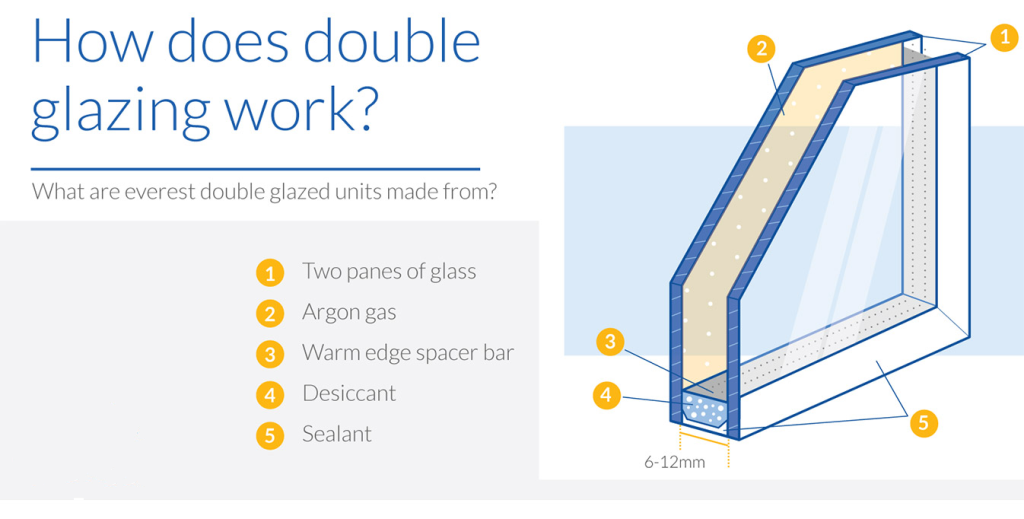
Advantages of Insulated Glass
Reduced Energy Bills
One of the most significant advantages of insulated glass is its ability to reduce your energy bills. By preventing heat loss in the winter and heat gain in the summer, insulated glass can significantly reduce the amount of energy required to heat or cool your home.
Increased Comfort
Insulated glass also makes your home more comfortable. By reducing drafts and keeping your home at a more consistent temperature, you can enjoy a more comfortable living space.
Noise Reduction
Insulated glass also provides excellent noise reduction. The air or gas-filled space between the panes of glass absorbs sound, reducing noise pollution in your home.
Improved Durability
Insulated glass is also more durable than single-pane glass. The two or more panes of glass provide added protection against breakage and damage.
Types of Insulated Glass
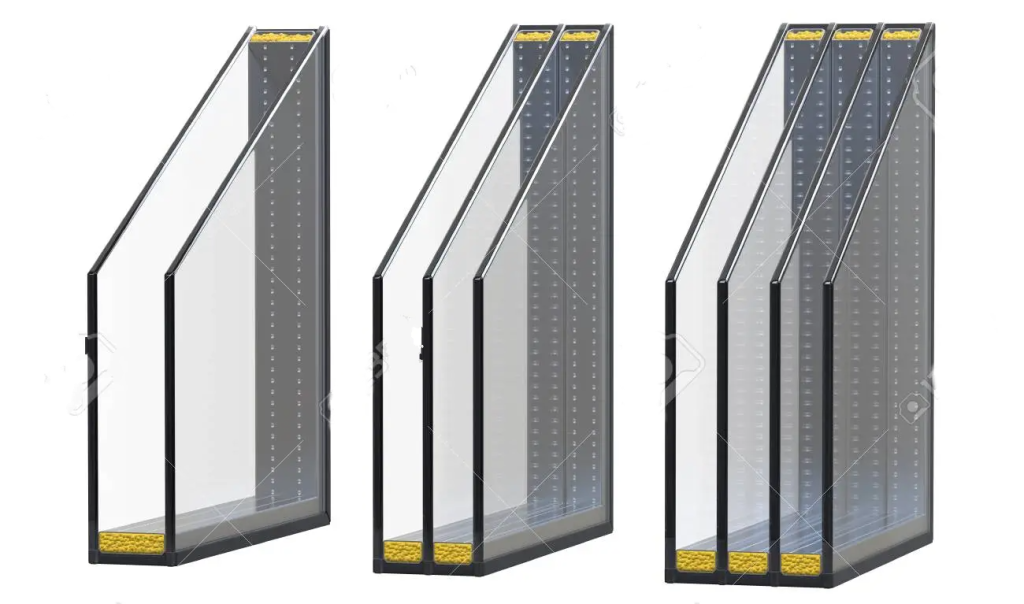
There are several types of insulated glass available, each with its own set of benefits.
Double-pane Insulated Glass
Double-pane insulated glass consists of two panes of glass separated by an air or gas-filled space. This is the most common type of insulated glass used in homes and is effective at reducing energy costs.
Triple-pane Insulated Glass
Triple-pane insulated glass consists of three panes of glass separated by two air or gas-filled spaces. This type of insulated glass is even more effective at reducing energy costs and is often used in colder climates.
Low-E Glass
Low-E (low-emissivity) glass is a type of insulated glass that has a special coating that reflects heat back into your home. This type of glass is very effective at reducing energy costs and can also help protect your home from harmful UV rays.
Here is a comparison table to help illustrate the differences between the different types of insulated glass:
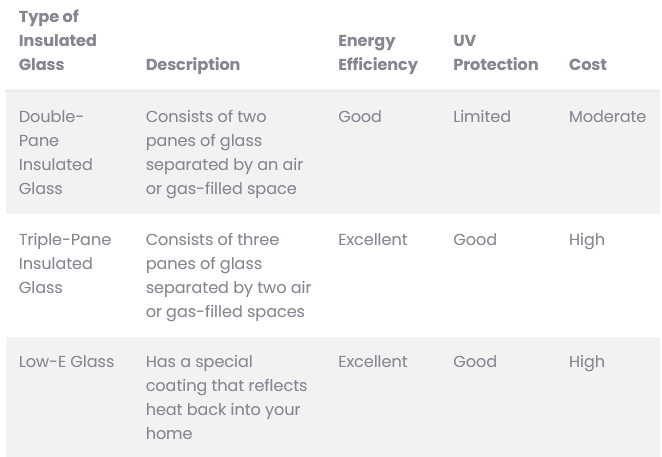
As you can see, each type of insulated glass offers unique benefits. Double-pane insulated glass is a good option for those who want to improve energy efficiency without breaking the bank. Triple-pane insulated glass is even more effective at reducing energy costs, but comes at a higher initial cost. Low-E glass is a great choice for those who want to protect their home from UV rays while also reducing energy costs. When choosing the right type of insulated glass, it’s important to consider your climate and energy usage habits.
Traditional Single-pane Windows vs Insulated Glass Windows
When it comes to windows, the type you choose can have a significant impact on your home’s energy efficiency and overall comfort. Two popular options are traditional single-pane windows and insulated glass windows. In this section, we’ll dive into the differences between these two types of windows and help you determine which one is right for your home.
First, let’s take a closer look at traditional single-pane windows. These windows are made from a single pane of glass and typically have no air spaces between the glass. While they may be an affordable option, they offer very little insulation and can be a significant source of heat loss in the winter and heat gain in the summer. This means your home’s heating and cooling system will have to work harder to maintain a comfortable temperature, resulting in higher energy bills.
In contrast, insulated glass windows are designed to provide better insulation and energy efficiency. These windows feature two or three panes of glass separated by air or gas-filled spaces. The air or gas between the panes creates a barrier that helps to reduce heat transfer, meaning your home will stay warmer in the winter and cooler in the summer. This improved insulation can lead to significant energy savings and a more comfortable home.
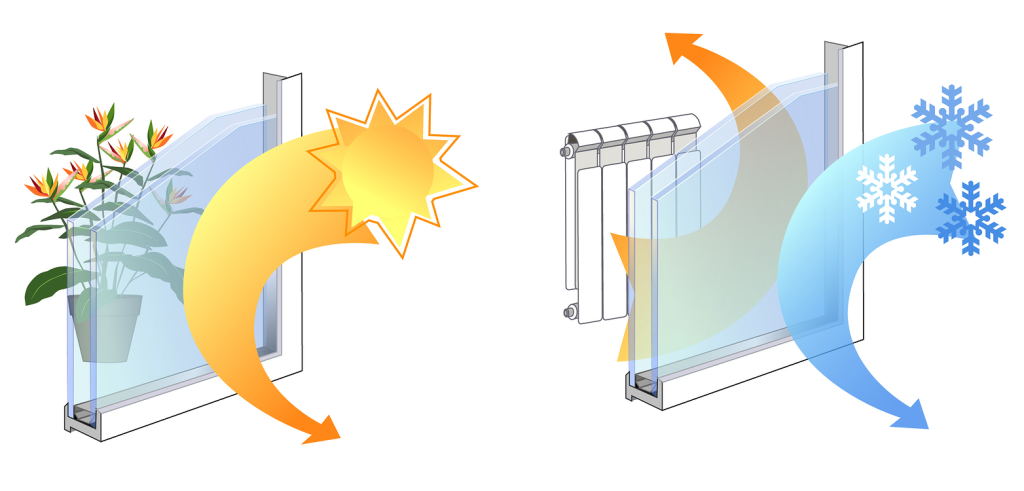
Insulated glass windows also offer several other benefits over traditional single-pane windows. For example, they can help reduce noise transmission, making your home quieter and more peaceful. They also offer better UV protection, helping to protect your furniture, carpets, and other belongings from fading or discoloration caused by sunlight.
Of course, there is a trade-off when it comes to insulated glass windows. While they offer superior energy efficiency and other benefits, they also come with a higher initial cost than traditional single-pane windows. However, the long-term savings on energy bills can make up for this higher cost over time. Additionally, some homeowners may qualify for rebates or other incentives that can help offset the initial cost.
In summary, insulated glass windows are a superior option for homeowners looking to improve their home’s energy efficiency and overall comfort. While they may come with a higher initial cost than traditional single-pane windows, the long-term savings on energy bills make them a worthwhile investment for many homeowners. Whether you’re looking to reduce your energy costs, enjoy a more comfortable home, or simply upgrade the look of your windows, insulated glass windows are an excellent choice.
Here is a comparison table to help illustrate the differences between traditional single-pane windows and insulated glass windows:
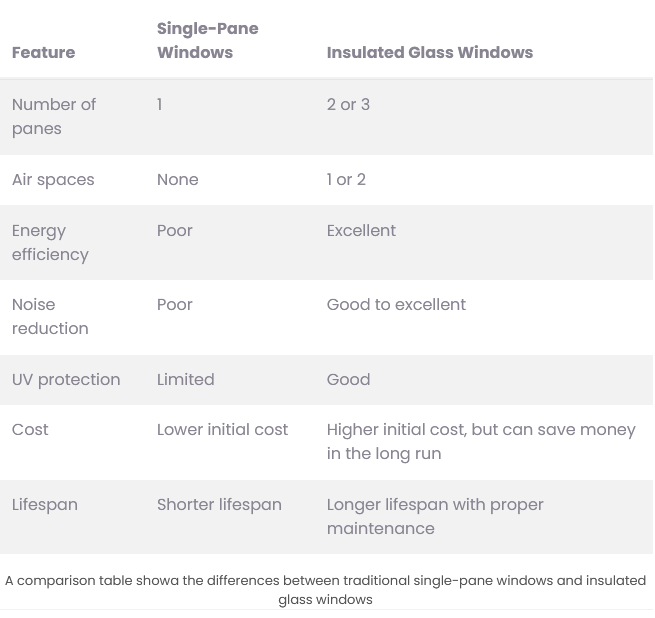
As you can see, insulated glass windows offer several benefits over traditional single-pane windows, including improved energy efficiency, noise reduction, and UV protection. While the initial cost may be higher, the long-term savings on energy bills make insulated glass windows a worthwhile investment for many homeowners.
Factors Affecting the Cost of Insulated Glass
The cost of insulated glass varies depending on several factors, including the type of glass, the size of the window, and the installation method. Double-pane insulated glass is typically less expensive than triple-pane glass, but it is still an investment. However, the long-term energy savings make insulated glass a worthwhile investment for homeowners.
Choosing the Right Insulated Glass
When choosing insulated glass, it’s important to consider the climate in your area and the orientation of your home. If you live in a colder climate, triple-pane insulated glass may be more effective at reducing energy costs. If you live in a warmer climate, low-E glass may be the best option.
How Much Can You Save with Insulated Glass?
The amount of money you can save with insulated glass depends on several factors, including the size of your home, the type of glass you choose, and your energy usage habits. However, studies have shown that insulated glass can reduce energy costs by up to 25%, making it a cost-effective investment for homeowners.
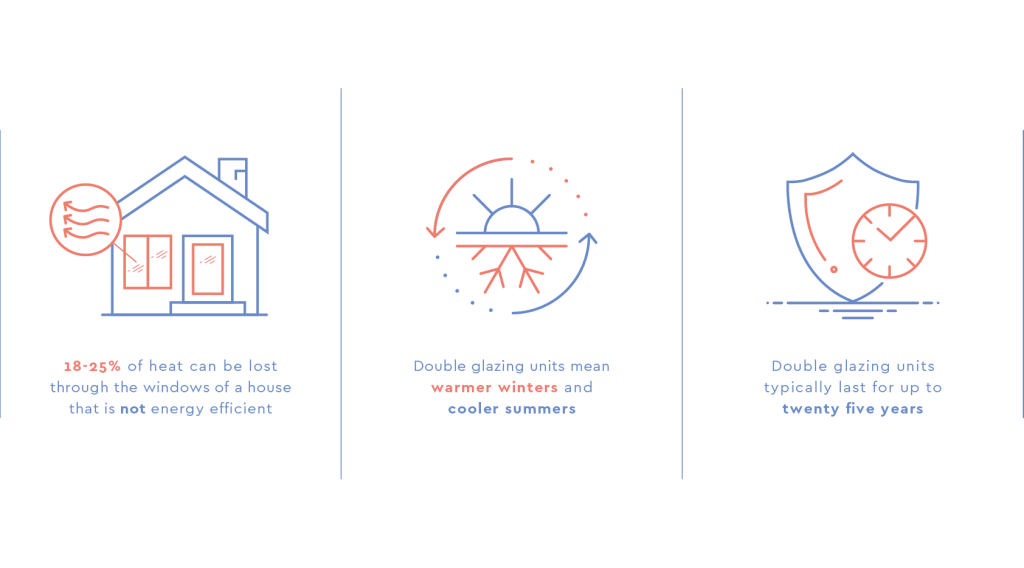
Conclusion
Insulated glass is an effective way to reduce energy costs and improve the comfort of your home. With the variety of types available, homeowners can choose the best option for their climate and needs. While the initial cost may be higher than traditional
